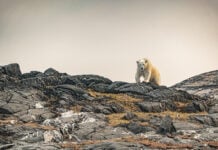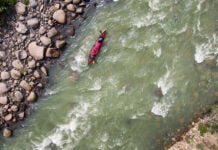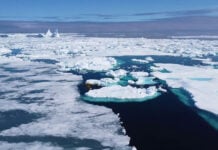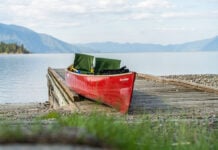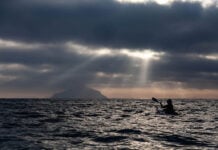With the main sail full of wind and favorable seas, the last mountain peak of Cape Horn dipped below the northern horizon. The sleek hull of the Spirit of Sydney, an open 60-foot aluminum sailing yacht, slid easily through the waves and swell. Our fleet of kayaks was secured to the forward deck for the journey south. Destination: Antarctica, 500 nautical miles across the Drake Passage.
The Spirit of Sydney is an Australian-flagged, single-mast sailing vessel retrofitted for Antarctic charters. With a crew of four and five keen passengers, it set sail from Ushuaia, Argentina, fully laden with provisions to be self-sufficient for the 25 days.
I felt small at sea, especially on the infamous Drake Passage. The raging seas here have helped keep the continent a pristine, natural wonder. It’s the largest protected ecosystem in the world, and one of the most fantastic sea kayaking destinations.
Access to Antarctica is strictly regulated. Most travelers prefer the luxury and comfort of a cruise liner. However, vessels with more than 12 passengers face additional regulations, which limits where and how kayakers can travel or conduct expeditions. Small sailing yachts provide access to more remote and less-traveled areas, as well as the freedom to paddle out on multi-night kayak camping excursions. Traveling on small vessels also eliminates the noise and bustle of large ship excursions.
Waking up in a tent beside the largest piece of ice on Earth is an indescribable feeling. Camping in Antarctica is a thrill just a tiny fraction of Antarctica’s 45,000 annual tourists experience. An expedition here requires a great deal of skill and planning. Landing options can be hazardous, and the weather and ice conditions can quickly turn. On this early season trip, the seasonal snowpack proved to be a challenge. At high tide, beaches and intertidal zones vanished, and the water met the three-meter-deep snowpack. The first order of business when setting camp was to dig a way up on to the land and eliminate any snowfall hazards. Mechanical haul systems helped raise the kayaks off the beach. Using snowshoes, the team created a small kitchen area and tent platforms. This was full winter camping from a kayak, and we followed stringent leave no trace regulations.
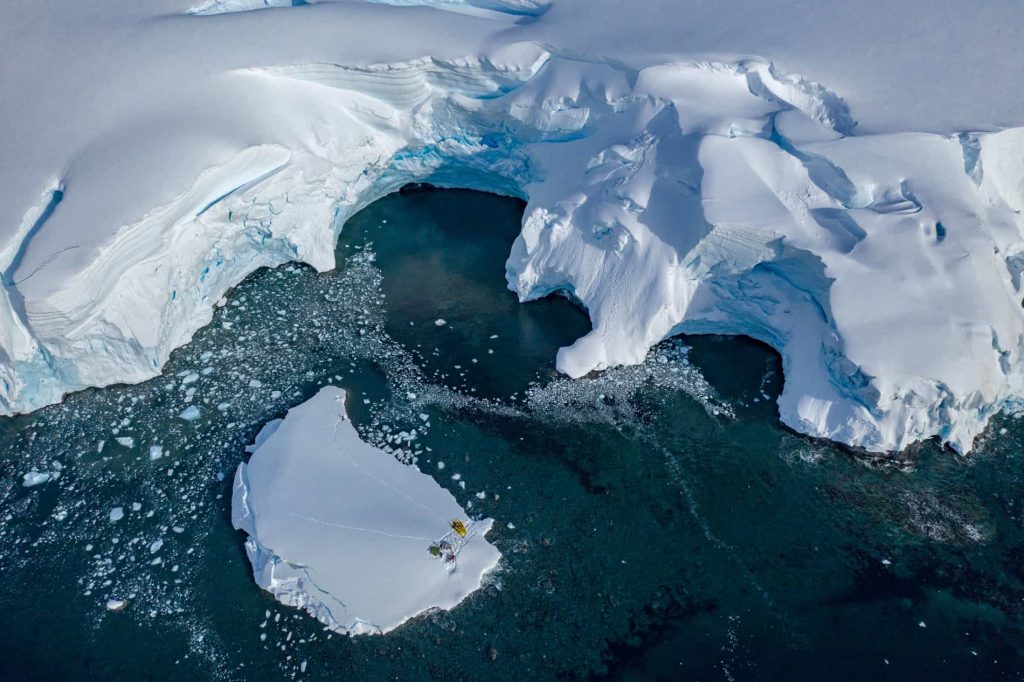
In the Peltier Channel, spectacular mountainscape meets wild seascape. The nine-mile paddle towards Port Lockroy is one the most fantastic kayak excursions any paddler could dream up. Towering jagged peaks have marked the entrance for mariners for more than 100 years. Massive glacier-clad peaks rise out of the ocean, and gentoo penguins playfully swam around our kayaks. Humpback whales have recently arrived in these rich waters and are busy feeding. The cove was frozen with seasonal sea ice, which made for a perfect and smooth landing for our kayaks, and a BBQ off the after deck of the Spirit of Sydney, as she was safely nosed into the sea ice as well.
Pleasant weather must be enjoyed to the fullest because it’s never long before another storm is on the horizon. Preparations made and hatches battened down; careful calculations determine when the optimal weather window is to start the return voyage back to South America. And then we return North.
While I’ve have had the opportunity to travel on several ships, by far, a sailing vessel offers the best travel off the beaten path in Antarctica. Small spaces sometimes get you to the tallest places.
Steve Ruskay is a Kokatat ambassador, the lead guide for Black Feather, and an expedition guide aboard the Spirit of Sydney.
Antarctica is the coldest, windiest, driest and highest continent. Who’s in? Photo: Jerry Ricciotti


